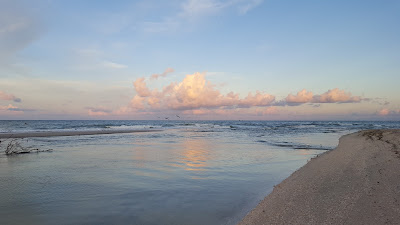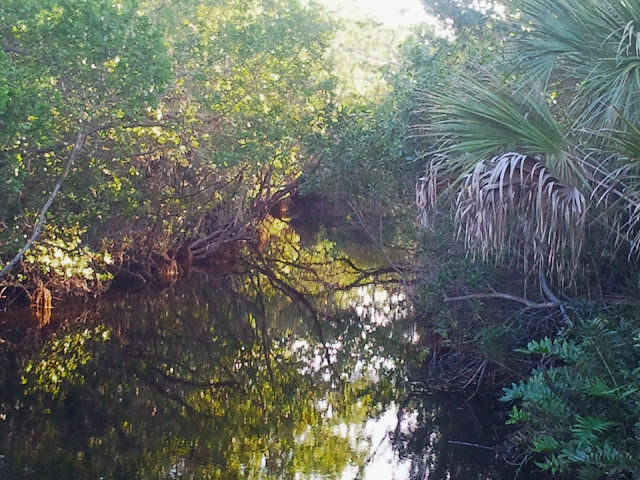The Wild West of Sanibel, Part 2

September 30, 2016 -- My new Autumn routine includes a 3-mile walk early in the morning, in addition to my usual 2-kilometer swim in the pool at mid-day. The walk always includes at least a few minutes on the beach; the rest is along the shared-use path. If conditions are good (low-ish tide, no rainstorms threatening, not too much hot sun), I will walk on the beach the entire way to the trail head on Silver Key. There, I can either take the trail or continue along the beach. Continuing along the beach requires some nimble maneuvering around, through, and over some dead trees -- trees whose lives were claimed by the Gulf of Mexico. Looking out at the Gulf from the opening at Old Blind Pass this morning The great reward, after maneuvering through the trees-turned-into-driftwood-statues, is that I reach the point where Clam Bayou/Old Blind Pass now meet the Gulf of Mexico. For years, this meeting of the waters did not exist; the sandy beach separated the bayous f...







